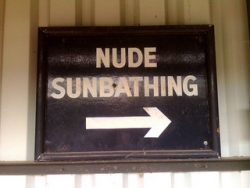
In 1983, PIAC brought a case that tested the outer limits of the criminal law of offensive behaviour.
PIAC’s client, a young woman, had been nude sunbathing at a small, secluded beach in Sydney’s eastern suburbs, when she was apprehended by a police officer (wearing swimming trunks).
The young woman was charged under the Offences in Public Places Act with behaving ‘in a manner likely to cause reasonable persons justifiably to be seriously alarmed or seriously affronted’. To reach her, or even see her, it was necessary for the police officer to clamber over large rocks. The only other people in the area were also nude, and included children, men and women.
At the hearing, PIAC sought to introduce a survey conducted of 200 Sydneysiders that showed an overwhelming view that nude sunbathing was not offensive. The magistrate rejected the survey as hearsay and preferred to rely on his own perception that the sight of a body without clothes would cause serious affront to the public.
A case was stated to the Supreme Court. Justice Yeldham held:
‘I do not believe that it was open to find that a female, behaving in a manner which was held not to be indecent, and lying quietly naked in the area in question, there being other naked people in the vicinity, could cause serious alarm to others.’
The decision had significance beyond nude sunbathing, in the general treatment of the so-called ‘victimless’ crimes: where a person has broken a standard of behaviour set down in the law but which causes no other person any harm.